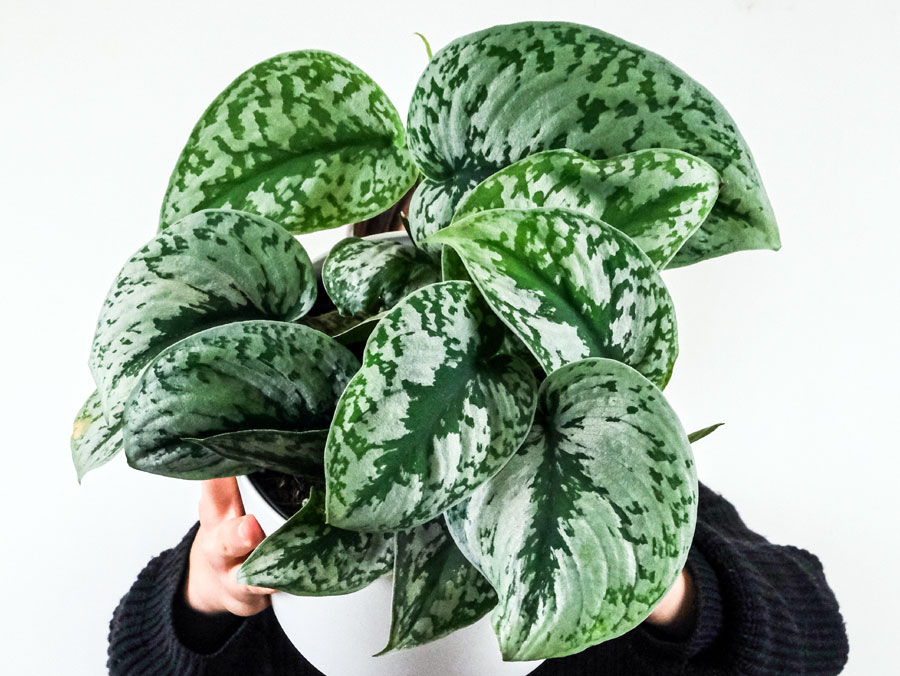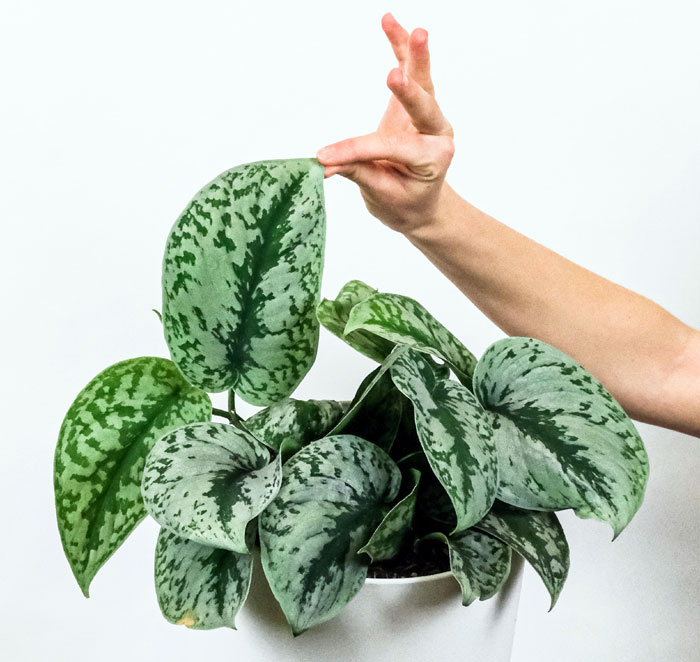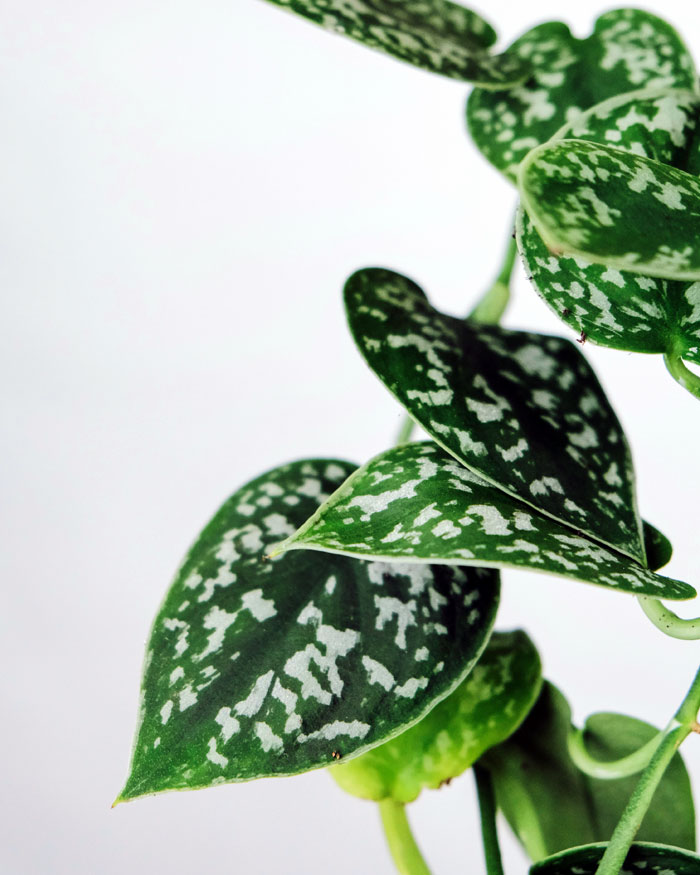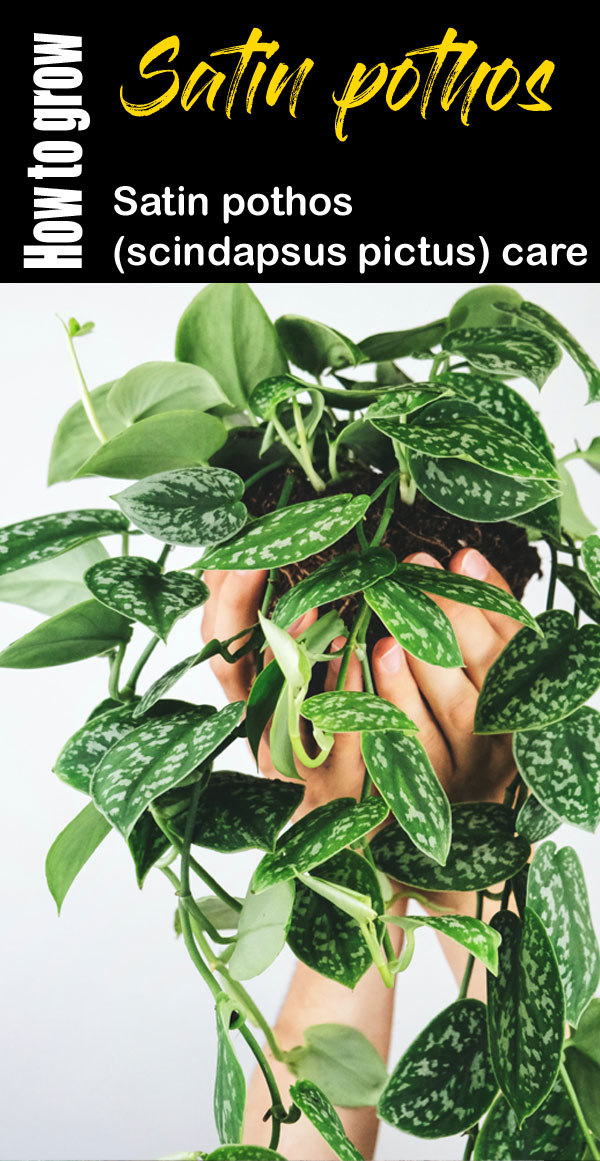Silver Satin Plant (Scindapsus pictus)
This plant has silvery markings on its dark green leaves, giving it the name satin pothos. Vine species, including silver vine, are members of the Arum family, Anuraceae. They are native to Asia, including India, Bangladesh, Thailand, Peninsular Malaysia, Borneo, Java, Sumatra, and Sulawesi. The eye-catching plant looks breathtaking as it grows in hanging baskets and as it climbs up moss poles. This pretty plant also goes by the names silver vine, scindapsus pictus, silver pothos, silver satin pothos and Scindapsus pictus ‘Argyraeus.’ The long stem can grow as long as 10 feet, and its leaves are heart-shaped. The leaves are matte green and covered in silver blotches. Small flowers rarely bloom in cultivation.
Overview satin pothos
Scientific name Scindapsus pictus
Common name Satin pothos, Silver Satin Plant, silver pothos, silk pothos and silver philodendron
Plant type Houseplant vine
Sun Bright, indirect light
Soil Potting soil
Soil pH 6.1-6.5
Zone 9-11
How to Grow and Care Silver Satin Plant
Take four-inch tip cuttings from a healthy plant in the spring or early summer to propagate the plant. Provide clean potting soil mixed in a pot four inches in diameter and good drainage. Ensure that the soil is evenly moist and as close to indirect sunlight as possible as the mother plant. About a month after planting, you should notice new growth, which means the plant has rooted, so you can stop watering as frequently.
Vine Satin Pothos grasps onto any surface that it can attach to, whether it is a pole, trellis, other plants, a wall, or a piece of furniture. Vine roots attach themselves to surfaces through their aerial roots. In some cases, it does this by itself, but in others it needs a little help, such as invisible mini hooks. As an alternative to trailing, you can also grow satin pothos in a hanging planter, letting the foliage cascade down.
Low-maintenance succulents like Satin Pothos make excellent houseplants. In addition to routine care such as watering and fertilizing, you can also snip off any damaged or dead leaves and prune the vines when they grow too long and become sparse. The leaves of your satin pothos can be cleaned with water if dust accumulates on them. Make sure not to use oil to make them shine because it can clog the cells and prevent them from breathing.
Sunlight
The Silver Satin Pothos prefers bright, indirect light throughout the year. The leaves of plants that are exposed to harsh, direct sunlight will scorch, and those that receive too little light will lose their color. Plants grown indoors should be placed far from a window to avoid being exposed to direct sunlight. The plant should be placed in an area that receives indirect light easily.
Watering
Make sure the top half of the soil is dry before watering your pothos. The soil should be allowed to dry between watering every 1-2 weeks. During brighter light conditions, you should water more often, whereas in low light conditions, you should water less often. It is crucial to avoid overwatering satin pothos, which manifests as yellow leaves and vine wilting. You will see water seeping out of the drain holes when you hose it down slowly and thoroughly with room-temperature water.
Soil
You can use any high-quality houseplant soil for your Satin Pothos. Growing silver satin pothos is a simple process when you have a suitable growing medium. Perlite and peat moss should be mixed in equal amounts with the potting soil. If you notice your soil draining slowly, consider aerating your potting mix or adding further perlite or peat to improve drainage and aeration.
Temperature and Humidity
Pothos of the silver satin variety prefer temperatures between 65 and 85 degrees Fahrenheit. You should not expose the foliage to temperatures below 65 degrees for even a short time, since cold air will damage it. As much as possible, avoid sudden temperature changes.
Since Satin Pothos thrives in the humid tropical climates of its origin, reproducing those conditions indoors is essential for it to grow well. The ideal relative humidity around your plant is between 40 and 50%.
Fertilizer
Silver pothos is not a fast-growing plant, and it doesn’t require a lot of fertilizing. A complete, water-soluble houseplant fertilizer should be applied about once a month to the satin pothos between spring and fall. Divide a water-soluble fertilizer 20-10-10 by half monthly from spring through fall. Winter feeding should be avoided, but resumed in spring when growth is vigorous.
Read also:
How to grow Dieffenbachia houseplants at home. 10 different types of Pothos. How to grow and care for Ice plants. Bromeliad plants growing and care tips. Black beauty aloe growing and care tips. Growing Geranium in containers. Statice flowers (limonium) care guide. Growing clerodendrum plant at home. How to grow and care for buttercup winter hazel plant. Rax Begonias houseplants growing guide.
For pin:








